The world of ants is truly fascinating. These tiny creatures, often overlooked and underestimated, form complex societies within their ant colonies.
From the diligent female workers who tirelessly gather food to the mighty queens who ensure the survival of their species, ants exhibit a remarkable level of organization and cooperation. While there are countless aspects to explore about ants, one key aspect that piques our curiosity is their lifespan.
Fascinating World of Ants
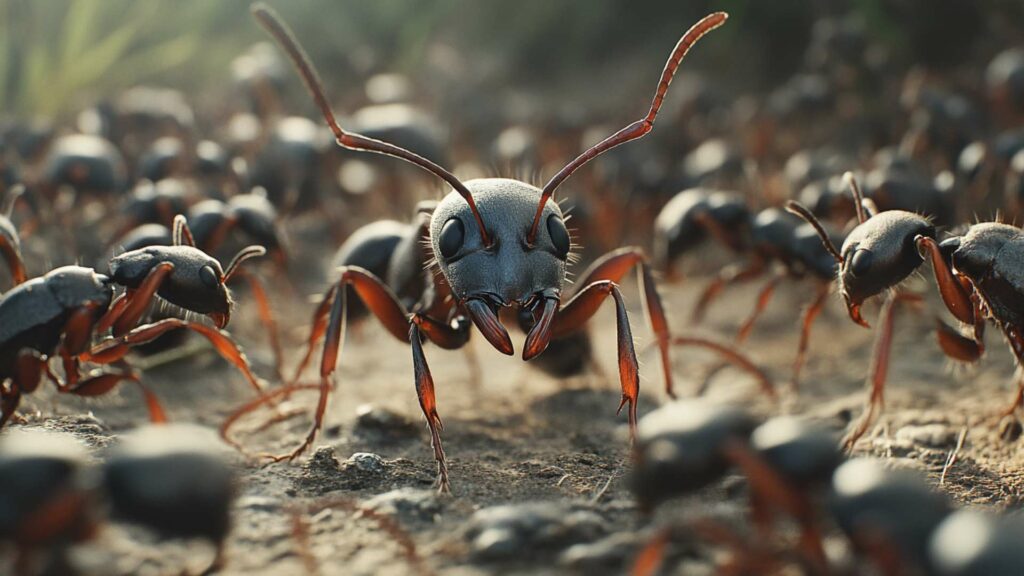
Ants exist in almost every corner of our planet, with over 12,000 known species. They have adapted to various habitats, from deserts to rainforests and everything in between. Each ant colony acts as a self-sufficient unit with a defined social structure.
The female workers form the backbone of the colony, performing tasks such as foraging for food, caring for ant pupae during the larval phase, and building intricate tunnels and chambers within their nests. One remarkable aspect of ant colonies is their ability to communicate and coordinate effectively.
They utilize chemical signals called pheromones to convey messages about food sources, danger warnings, or even recruitment efforts for specific tasks. This efficient system ensures smooth operation within the colony’s queen lays and helps maintain order among its members.
Lifespan as a Key Aspect
The lifespan of ants is an intriguing topic because it reveals varying durations across different castes within a single species or even among different species. Understanding how long ants and ant queens live plays a crucial role in comprehending their life cycles and reproductive strategies. While worker ants have relatively short lifespans ranging from just a few weeks to several months depending on factors such as environmental conditions and physiological demands, queens can live exceptionally long lives lasting several decades—outliving many other organisms on Earth.
This article will delve into the intricacies of ant lifespans, exploring the factors that influence their longevity and shedding light on some exceptional cases of extreme longevity. Let’s embark on this fascinating journey through the intricate world of ants and uncover the secrets of their remarkable lifespans.
Lifespan of Different Ant Castes
Worker Ants: Short Lifespan and Physiological Demands
Worker ants, the tireless soldiers of the ant colony, have a relatively short lifespan compared to other castes within the ant’s life span of the colony. On average, worker ants live for a few weeks to a few months, depending on various factors such as species and environmental conditions. Their demanding tasks and responsibilities contribute to their shorter life span.
The daily routine of worker ants involves foraging for food, maintaining and expanding the nest, caring for the ant pupae and larvae, as well as defending the colony against potential threats. All these activities put significant physiological demands on their bodies.
Worker ants work tirelessly during their short lives without pausing for rest or relaxation. This continuous activity takes a toll on their bodies, leading to faster aging and subsequent death.
Queen Ants: Exceptional Lifespan and Reproductive Importance
In stark contrast to worker ants, queen ants enjoy an exceptional lifespan that can extend up to several decades in some ant species. The queen of female ants is usually larger than worker ants and has distinct physiological adaptations that allow her long life span.
The primary role of a queen ant is reproduction. A newly mated queen ant problem establishes a new colony by excavating a small chamber where she lays her eggs.
Over time, these fertilized eggs develop into new workers who assume various tasks within the ant colony. The presence of a fertile queen ensures the continuity of the ant life cycle by producing offspring that will form new colonies in the future.
The reproductive importance of queens necessitates their long lifespan compared to other members of an ant colony. They are crucial for sustaining and expanding flying ant colonies over extended periods.
The survival and productivity of the ant queens are essential not only for individual colonies but also for maintaining biodiversity within different ant species. While worker ants have relatively short lives due to the physiological demands imposed by their responsibilities, queen ants enjoy exceptional longevity owing to their reproductive significance.
The delicate balance between the roles of worker ants and queens is vital for the survival and growth of ant colonies. Understanding the different lifespans among ant castes provides valuable insights into the complexities of their social structure and behaviors.
Factors Influencing Ant Lifespan
Ants, as social insects, exhibit a wide range of lifespans across different species. Some ants live for just a few weeks, while others can survive for several years. This variation is due to a combination of genetic factors and environmental influences that shape the lifespan of each ant species.
Certain ant species have evolved specific adaptations that allow them to live longer in their respective habitats. These adaptations include physiological changes and behavioral strategies that promote survival.
Environmental Adaptations and Survival Strategies
Ants have developed remarkable adaptations to thrive in diverse environments. These adaptations play a crucial role in determining their lifespan. For instance, some ant species have evolved the ability to withstand extreme temperatures and humidity levels by modifying their physiology and behavior.
In deserts or arid regions, ants may burrow deep into the ground during the hottest parts of the day to avoid dehydration and heat stress. Additionally, many ant species have developed sophisticated communication systems within their colonies.
This enables them to efficiently gather resources such as food and water, which are vital for survival and longevity. The collective efforts of workers ensure the sustainability of the colony as they work together to maintain optimal conditions within their nests.
Environmental Conditions: Impact on Overall Longevity
Environmental conditions significantly impact an ant’s overall lifespan. Factors such as temperature, humidity, and resource availability play crucial roles in determining how long ants live.
Extreme temperatures can be detrimental to ants’ health; both extremely high or low temperatures can lead to increased mortality rates among workers and other castes. Humidity also plays a vital role in ant survival.
Some ant species thrive in humid environments while others prefer drier climates. Adequate humidity levels are essential for maintaining proper physiological functions within an ant’s body.
Furthermore, resource availability directly impacts ants’ lifespan. Access to food, water, and suitable nesting materials greatly influences their ability to survive and reproduce.
In situations where resources are scarce or competition is high, the lifespan of ants may be shortened due to increased stress and reduced access to essential nutrients. The factors influencing ant lifespan are multifaceted.
Species variation contributes to the diverse lifespans observed across different ant species. Environmental adaptations and survival strategies enable ants to thrive in various habitats.
Environmental conditions such as temperature, humidity, and resource availability have a significant impact on overall longevity. By understanding these factors, we can gain insights into the fascinating world of ants and appreciate the intricate mechanisms that govern their lives.
Unique Cases of Extreme Longevity in Ants
Methuselah Ants (Messor barbarus): The Ancient Guardians of the Colony

In the vast realm of ants, where life spans are measured in mere weeks or months, there exists a remarkable species that defies this norm: Messor barbarus, commonly known as Methuselah ants. These elderly guardians hold the title for being the longest-lived known ant species, astonishingly stretching their lives up to approximately 30 years. Such longevity is a result of their astounding adaptations for survival in harsh and unpredictable environments.
Methuselah ants have developed impressive physiological mechanisms to withstand arid conditions and scarcity of resources. Their ability to endure prolonged periods without sustenance is an essential part of their exceptional life span.
By efficiently storing seeds within their nests, these resilient creatures ensure a steady food supply during lean times when foraging may not be possible. Moreover, they possess an innate talent for locating and exploiting remote food sources that give them an edge in challenging habitats.
Temnothorax rugatulus: The Social Immunity Masters
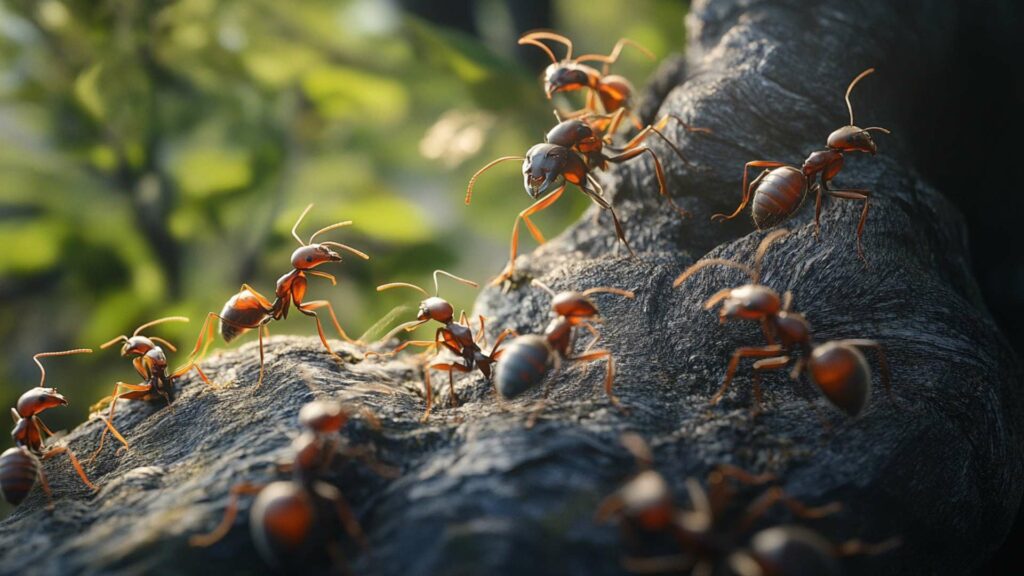
Embark on a journey into the enchanting world of Temnothorax rugatulus ants, where social immunity reigns supreme and longevity becomes an extended affair. While most ant colonies rely on individual immunity against parasites and diseases, these resourceful insects have evolved cooperative strategies that enable them to live longer lives through social interactions. In Temnothorax rugatulus colonies, ant larvae produce secretions containing antimicrobial compounds that provide protection against pathogens.
These secretions are then spread throughout the nest as workers groom one another. This communal grooming behavior serves as a powerful defense mechanism against infection within the colony.
By working together to maintain cleanliness and hygiene standards within their intricate network of tunnels, these ants create an environment conducive to longevity for the entire colony. Additionally, social interactions involving trophallaxis, the sharing of food between colony members, play a crucial role in promoting longevity.
Through this selfless act, nutrients and vital substances are distributed among all individuals, ensuring their well-being and health. The collective nature of their actions fosters a harmonious balance within the ant society and extends the life span of every member.
Unveiling Nature’s Secrets
The astonishing cases of Methuselah ants and Temnothorax rugatulus provide us with glimpses into the intricate tapestry of ant life spans. These extraordinary creatures demonstrate that through adaptations for survival and cooperative behaviors, ants can defy the limitations imposed by time.
Their ability to thrive in harsh environments and foster longevity within colonies is a testament to nature’s ingenuity. As we further explore the intricacies of ant biology, we continue to uncover new queens and hidden marvels that challenge our understanding of life spans in these small but mighty insects.
The quest to unravel the mysteries behind an ant’s remarkable journey from egg to adult ant serves as a reminder that there is always more to discover in the captivating world beneath our feet. In embracing their fascinating existence, we gain not only knowledge but also an appreciation for the diversity and resilience found within every tiny creature that shares our planet.
Factors contributing to shorter lifespans in certain situations
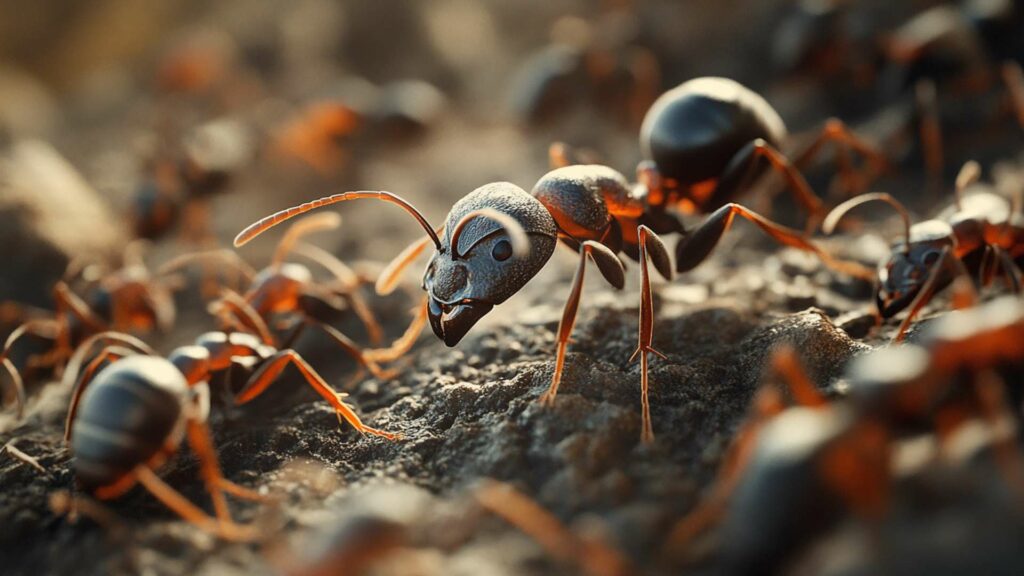
Ants, like many other creatures in the animal kingdom, face various predators and threats that can significantly impact ant eggs and their lifespan. From birds to reptiles, there are numerous species that consider ants a tasty snack.
Worker ants, being the ones on the front lines of foraging and defending the colony, are particularly vulnerable to predation. Their survival rate can be influenced by factors such as the presence of natural predators in their habitat or even human activities like pesticide use.
Impact on worker ant survival rate
The survival rate of worker ants can depend on several factors. First and foremost for most ants, is their ability to detect potential threats quickly.
Ants have evolved remarkable communication systems through chemical signals called pheromones, allowing them to alert other workers about danger. When a worker ant detects a predator or perceives an imminent threat, it releases alarm pheromones that signal nearby workers to take evasive action.
Defensive mechanisms against predators
In order to combat predatory threats effectively, ants have developed an array of remarkable defensive mechanisms. Some species employ aggressive tactics by biting or stinging attackers with venomous compounds that can cause pain or even paralysis. Others may resort to collective defense strategies where groups of workers join forces and attack together as a unified force.
Parasites and diseases
Parasites and diseases pose yet another challenge for ant colonies. Certain species of mites, nematodes, fungi, bacteria, and viruses can infect ants, leading to detrimental effects on both individual ants and the entire colony’s health. These pathogens can weaken an individual or own colony’s immune system or disrupt essential physiological functions necessary for survival.
Effects on individual and colony health
When parasites or diseases infiltrate an ant colony, they can have far-reaching consequences. Infected ants may experience decreased lifespan, reduced reproductive capabilities, or impaired ability to carry out their tasks within the colony.
In severe cases, entire colonies can collapse due to the spread of infections. Ants have developed various strategies to combat these threats, such as grooming behaviors that help remove parasites from their bodies or even disposing of infected individuals to prevent further contagion.
Antibiotic behaviors within colonies
Intriguingly, some ant species have evolved a unique method of combating diseases by using natural antibiotics produced within their bodies. They cultivate special microorganisms on their exoskeletons or in specialized chambers inside the colony that produce antimicrobial substances.
These antibiotics help protect the ants from harmful pathogens and maintain colony health. While ants have adapted well to confront various threats and predators throughout their lives, these challenges can still contribute to shorter lifespans in certain situations.
From evasive actions against predators and collective defense strategies to combating parasites and diseases through grooming behaviors and antibiotic production, ants employ a range of mechanisms to stay alive and protect their colonies. Understanding these factors contributes greatly to our knowledge of how long ants live and provides valuable insights into the remarkable world of these social insects.
The Role of Nutrition in Ant Lifespan
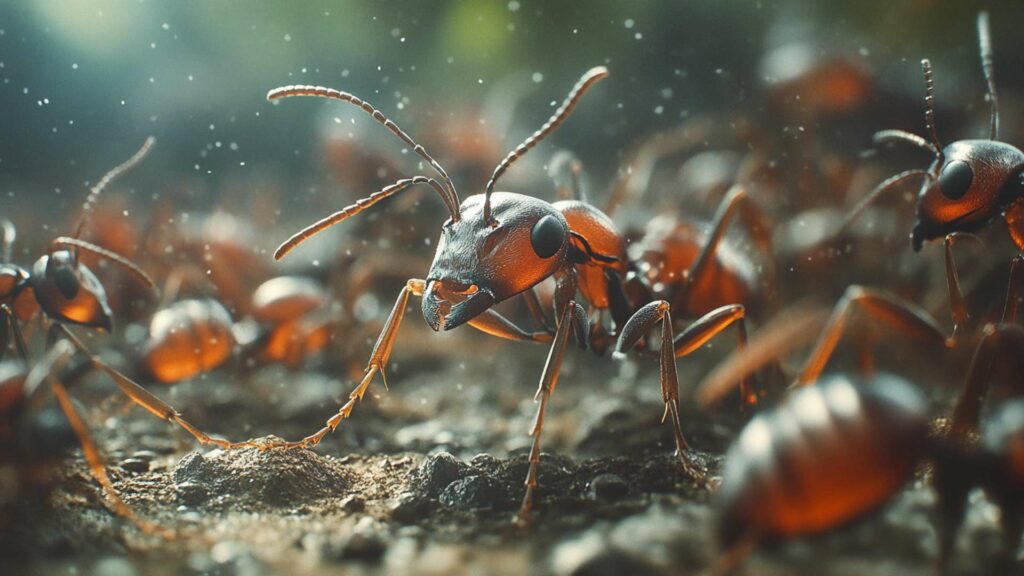
Ants, being social insects, have different castes within their colonies. These castes include workers, soldiers, and the all-important queen.
Each ant’s caste also has specific dietary requirements that contribute to their overall health and lifespan. Worker ants primarily require carbohydrates and proteins obtained from various food sources like nectar, seeds, fruits, and even other insects.
These nutrients provide them with the energy necessary for their constant foraging and nest maintenance activities. Soldier ants have similar dietary needs as workers but might require a slightly higher protein intake to support their protective roles within the colony.
Nutritional Needs During Larval Development
The nutritional needs during ant larval development are crucial in determining the longevity of adult ants. The larvae rely on a high-protein diet as they undergo rapid growth and metamorphosis into adult ants.
This protein-rich diet predominantly comes from secretions produced by worker ants known as “larvae food.” These secretions contain essential amino acids vital for proper larval development. Without sufficient nutrition during this stage, the larvae may fail to reach maturity or develop weak immune systems, leading to compromised health in adulthood.
Queen’s Diet and Lifespan
The ant queen plays a significant role in the colony’s survival by producing offspring and maintaining social order among male ants. As such, her nutritional needs differ from other castes’.
Queen ants require a diverse diet that includes proteins along with fats and sugars obtained from prey items brought by worker ants or through trophallaxis (food-sharing) within the colony. This nutrient-rich diet is crucial for queen longevity as she can live for several decades if conditions are favorable.
Conclusion
Nutrition plays a vital role in determining an ant’s lifespan across different castes. Worker ants, with their short lifespan of a few weeks to a few months, rely on a diet rich in carbohydrates and proteins for energy and maintenance tasks.
Larvae require a protein-rich diet during development to ensure healthy growth and maturation into adult ants. The queen’s diet, consisting of proteins, fats, and sugars, supports her reproductive role and longevity within the colony.
By understanding the dietary requirements of ants and providing them with appropriate nutrition, we can contribute to their overall wellbeing and potentially extend their lifespan. So let us appreciate the intricate world of ants and work towards creating an environment that allows them to thrive!
Dissuade Ants with D-Termination: Las Vegas’ Premier Pest Control!
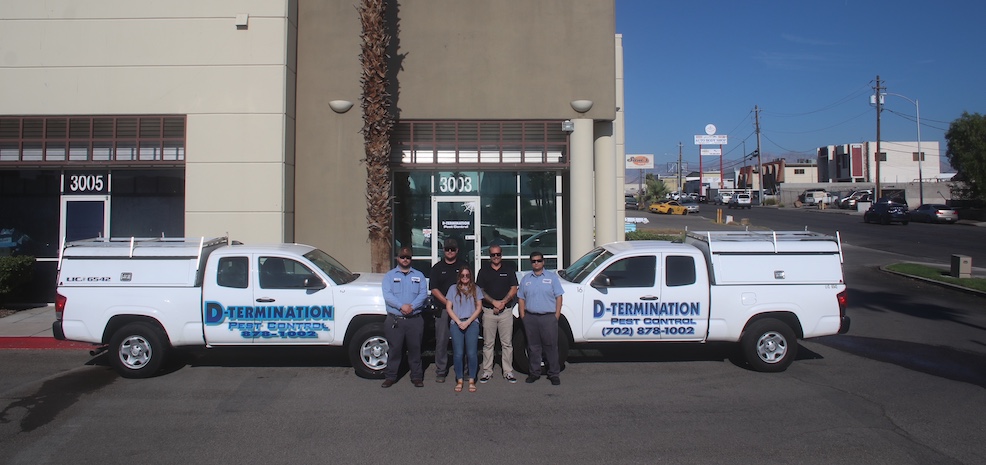
Facing ant issues? D-Termination can assist. Our expert team specializes in discouraging ants, restoring cleanliness and integrity to your area. Say goodbye to ants—choose D-Termination for effective pest control today!
Contact us at 702-919-6310 or visit dtermination.com to book your ant control service and reclaim your space from these unwanted pests.
Frequently Asked Questions:
Regular ants typically live for several weeks to a few years, depending on the species.
No, ants do not live for up to 30 years; their lifespan is much shorter.
Indoor ants have a similar lifespan to outdoor ants of the same species.
Ants are generally not active 24 hours a day; their activity patterns vary by species and environmental factors.








